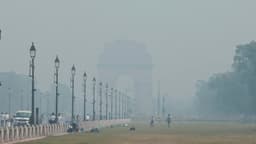Home / Environment / Delhi Chokes: Why AQI Readings Differ
Delhi Chokes: Why AQI Readings Differ
20 Nov
Summary
- New Delhi experiences severe air pollution, prompting protests for clean air.
- AQI readings vary significantly between official and independent monitors.
- Differences in AQI stem from calculation methods and pollutant thresholds.
Protests have erupted in New Delhi as residents, particularly parents, voice concerns over severe air pollution and the right to healthy living. Air quality monitors show alarming levels, with significant discrepancies between official Indian readings and those from independent sources like IQAir. These differences stem from how the Air Quality Index (AQI) is calculated and the differing safety thresholds for pollutants like PM2.5.
The calculation of AQI involves averaging pollutant concentrations over 24 hours and deriving sub-indices for each pollutant, with the highest sub-index determining the overall AQI. India's Central Pollution Control Board (CPCB) uses a scale capped at 500, grouping all readings above this into the 'severe' category, while IQAir provides un-capped, raw data. This disparity means official readings might understate the severity compared to independent monitors.
Experts explain that while AQI is a simplified public health tool, the differences in readings and the capping at 500 can obscure the true extent of pollution. Even at AQI 500, the air is considered hazardous. The CPCB relies on reference-grade monitors, whereas IQAir also incorporates data from numerous low-cost sensors, contributing to the varied results citizens observe.




